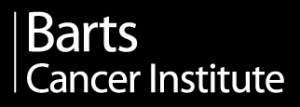October 17
2013
Biodesign Auditorium
727 E. Tyler St. Tempe
AZ 85287
Absorption of light by endogenous or exogenous cells and/or tissue-associated chromophores creates photophysical processes that are captured for diagnostic uses and for surgical guidance, in addition to treatment purposes. Such a process also provides a tool for the mechanistic understanding of disease pathology and tissue responses to various therapeutic interventions. Photodynamic therapy (PDT), a modality approved by regulatory agencies worldwide, for clinical use in cancer and non-cancer diseases, is a photochemistry based process resulting from the light activation of exogenous chemicals localized at anatomical sites of disease. The active molecular species produced by the molecular excited state destroys biological targets in the vicinity. A small fraction of the excited state de-energizes via fluorescence thus providing an opportunity to use the same molecule for detection/diagnostics and therapy. As with any therapy, PDT elicits specific molecular responses that can be
exploited to enrich our arsenal of treatments. The presentation will discuss the current state of PDT as a theranostic modality and on future directions.



